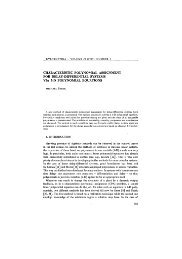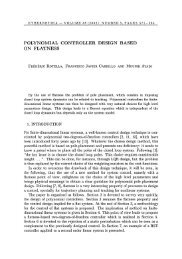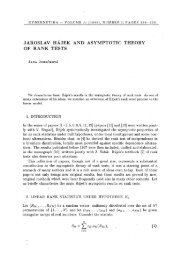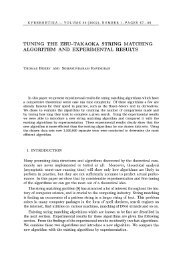n - Kybernetika
n - Kybernetika
n - Kybernetika
Create successful ePaper yourself
Turn your PDF publications into a flip-book with our unique Google optimized e-Paper software.
262 P.K. SEN<br />
The varying probability structure introduces additional complications in the study of<br />
asymptotics for such estimators. Rosen [32], [33] considered an alternative approach<br />
(via the coupon collector's problem) and presented deeper results. Let {Jfcj k > 1}<br />
be a sequence of i.i.d.r.v.'s where<br />
Let then<br />
P{J k = r}=p r , l 1;<br />
v k = inf{m(> k) : number of distinct J\,... ,J m = k}, k > 1. (3.14)<br />
Then Rosen showed that for every n > 1,<br />
n<br />
HT n =Y,Yn» k = Bnv n , (3.15)<br />
k=i<br />
where for each m > 1, H nm is the bonus sum at the mth stage in a coupon collector's<br />
problem with the set {a nr , p r ; 1 < r < n}, with a nr = a r /A(r,n), for<br />
r = 1,..., N. Thus, the asymptotic behavior of randomly stopped bonus sums provides<br />
the access to the general asymptotics for HT n and other related estimators.<br />
Rosen's formulation rests on sophisticated nonstandard mathematical analysis, and<br />
some simplifications and generalizations based on martingale approximations are<br />
due to Sen [38]. By reference to a coupon collector's model, we consider a sequence<br />
{QN} where for each N, QN = {(^N(l),Pi(l)), • • • ,(a N (N),p N (N))} and the nonnegative<br />
p N (s) add upto 1. Define the JNk as in (3.12) and the YNk as in (3.13)<br />
(with the ajfc/A(Jfc,n) being replaced by a N (J Nk ))- Let then<br />
ZNn = ^Ynfc, n>l, Z NO = 0. (3.16)<br />
k






